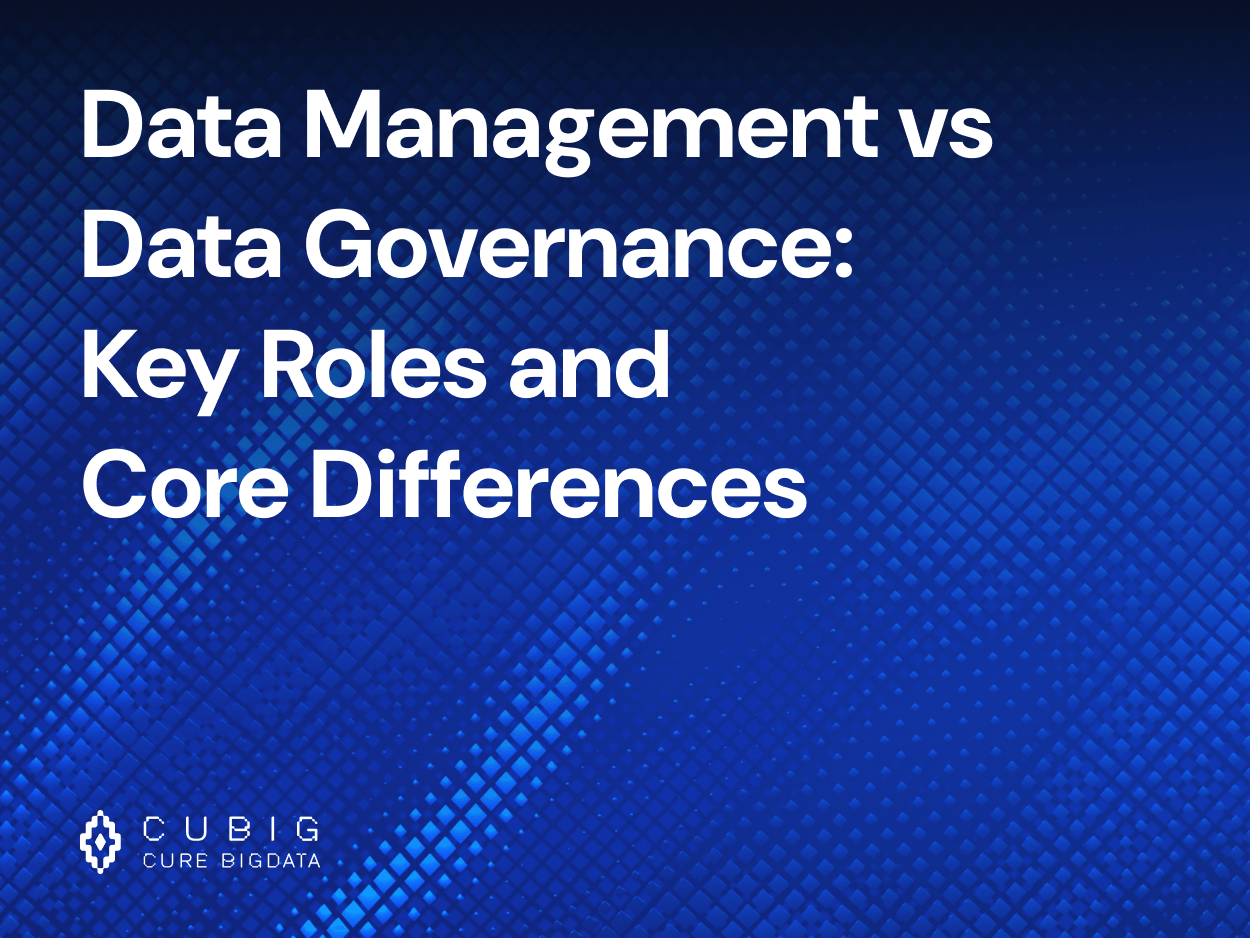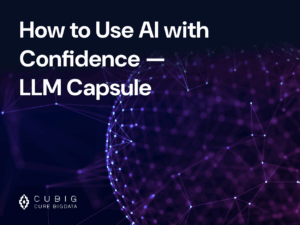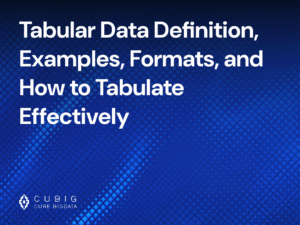Data Management vs Data Governance: Key Roles and Core Differences
Table of Contents
Data Management Explained
Definition and Scope of Data Management
Data management is the discipline focused on the operational processes that make data available, consistent, secure, and useful for decision-making. It encompasses both technical and procedural tasks across the data lifecycle—from data ingestion and processing to storage and delivery. These tasks ensure that data is collected from diverse sources, transformed into meaningful formats, stored efficiently, and made accessible to systems and people that need it—whether for analytics, reporting, or application logic.
Key Domains: Integration, Storage, Quality, Security
Core functions of data management include:
-Data integration, which involves connecting and harmonizing data from multiple sources or systems to create a unified dataset for analysis or reporting. -Data storage, which focuses on how data is physically and logically stored—such as in relational databases, data warehouses, or cloud data lakes—to ensure performance, scalability, and availability. -Data quality, which includes processes to identify and correct errors, inconsistencies, duplicates, and incomplete records to maintain data integrity. -Data security, which protects sensitive or critical data from unauthorized access, breaches, or misuse, using measures like encryption, access controls, and monitoring.
Typical Roles Involved in Data Management
Data management is carried out by a range of professionals with specialized responsibilities. Data engineers design and build pipelines to ingest and transform data. Database administrators (DBAs) manage and optimize storage systems. Data analysts work with structured datasets to generate insights, while IT operations teams ensure infrastructure reliability and system performance. These roles collaborate to ensure that the organization’s data is reliable, accessible, and aligned with both technical and business needs.
Data Governance Explained
Definition and Purpose of Data Governance
Data governance is a strategic framework that defines how data assets are managed across their lifecycle. It establishes the rules, roles, and responsibilities for ensuring that data is accurate, consistent, secure, and ethically used. The core purpose of data governance is to support organizational accountability, enable regulatory compliance, and build trust in data for operational and analytical use. It addresses who owns the data, who can access it, how it should be protected, and how long it should be retained or archived.
Core Focus: Policy, Accountability, Standards
A data governance framework typically focuses on three foundational areas. First, policy development defines rules around data usage, access control, classification, and retention. For example, policies may specify how long personal data can be stored or under what conditions it can be shared. Second, accountability structures establish roles such as data stewards, custodians, and governance councils. These roles ensure that data has clear ownership and that issues related to quality, access, or compliance are escalated and resolved. Third, standards enforcement ensures consistent application of naming conventions, data definitions, classification levels, and quality thresholds across systems and teams. This reduces ambiguity and enables interoperability across departments and platforms.
Common Governance Frameworks and Models
There are several well-established data governance models used across industries. DAMA-DMBOK (Data Management Body of Knowledge) provides a comprehensive structure for data functions including governance, architecture, and quality. COBIT (Control Objectives for Information and Related Technologies) focuses on aligning IT processes with governance and compliance. The EDM Council’s DCAM (Data Management Capability Assessment Model) offers a detailed framework for assessing and improving data governance maturity in financial and regulated environments. These models help organizations formalize their governance practices and align them with business and regulatory expectations.
What Is the Difference Between Data Management and Data Governance?
Core Definitions and Conceptual Boundaries
Data management refers to the day-to-day operations, tools, and systems used to collect, store, organize, and deliver data across its lifecycle. It includes processes such as ingestion, integration, transformation, storage, access, and security. These efforts ensure that data is accurate, timely, and usable by various business functions. In contrast, data governance defines the overarching rules, responsibilities, and decision-making structures that guide how data should be managed. It outlines who is accountable for specific data domains, what standards must be followed, and how compliance is monitored. In short, data governance sets the strategic “what” and “why,” while data management executes the operational “how.” Governance creates the guardrails; management operates within them.
Why This Distinction Matters for Organizations
Understanding the difference between data governance and data management is critical for building a sustainable, compliant, and high-performing data environment. If governance is missing, data management teams may operate with unclear policies, leading to inconsistent data practices or non-compliance with regulations. Conversely, without strong management practices, governance policies become theoretical and unenforced. Clearly defining the boundary between the two ensures accountability, prevents duplicated effort, and aligns data activities with broader business objectives. Together, they form a complete framework that supports data quality, security, compliance, and value generation at scale.
Data Management vs Data Governance: Side-by-Side Comparison
Differences in Objectives, Ownership, and Execution
While both disciplines deal with data, their focus and function are different. Data governance defines what should be done with data, who is responsible, and what policies must be followed. It is typically led by compliance officers, legal teams, and data governance professionals. Data management, in contrast, focuses on how data is technically handled—how it is collected, processed, stored, and delivered. These activities are usually managed by IT teams, data engineers, database administrators, and developers. Governance ensures data is handled ethically and in line with external regulations and internal standards, whereas management ensures data operations are efficient, reliable, and technically sound.
How They Interact to Form a Holistic Data Strategy
Data governance and data management are most effective when implemented together in a coordinated framework. Governance establishes strategic controls, such as who can access what data, what standards must be followed, and how compliance is measured. Management then translates these controls into technical operations—building pipelines, securing storage, and delivering clean, usable data to stakeholders. By working in tandem, these two disciplines ensure that data is not only compliant and trustworthy but also available and actionable. This synergy supports business agility, enables innovation, and minimizes risk across the organization’s data landscape.
Practical Examples: Governance vs Management in Action
Example 1: Implementing a Data Catalog
Data governance defines the rules for how metadata should be structured, which fields must be documented (such as data owner, classification, and refresh frequency), and who is responsible for maintaining each dataset entry. It ensures that there is a clear policy around data discoverability and stewardship. Data management teams then execute this guidance by onboarding datasets into the catalog, tagging fields according to the standards, setting up access permissions, and maintaining the underlying infrastructure to keep the catalog responsive and updated as systems evolve.
Example 2: Creating a Data Retention Policy
Governance teams are responsible for drafting the data retention policy in accordance with legal, regulatory, and business requirements. They determine which data types must be retained, for how long, and under what conditions deletion or archival is allowed. They also review and approve the policy through appropriate governance councils. Management teams implement these requirements by configuring storage systems to automatically delete or archive data after the retention period, setting up alerts for exceptions, and regularly validating that the configured processes match the policy’s intent.
Example 3: Managing Data Integration Pipelines
Governance mandates that only trusted, approved, and verified data sources can be connected to core business systems. It may also require lineage tracking, field-level documentation, or approval workflows before new integrations go live. Management teams carry out the integration by developing ETL or ELT pipelines that move and transform data across systems. They are responsible for monitoring pipeline health, handling errors, ensuring performance, and maintaining logs that can be audited.
Example 4: Auditing for Regulatory Compliance
Governance establishes the scope and frequency of audits, defines what data and activities need to be tracked, and ensures the audit process aligns with frameworks like GDPR, HIPAA, or SOX. They define reporting requirements and escalation paths in case of non-compliance. Management supports the audit by collecting system logs, generating required reports, monitoring for anomalies, and responding to governance teams with evidence of compliance. This may involve setting up automated logging, backup retention, or monitoring tools.
How Azoo AI Supports Both Data Management and Governance
Azoo utilizes differential privacy technology to generate uniquely differentiated synthetic data, enabling real-time maintenance of data reliability, privacy, and consistency. This empowers enterprises to achieve both effective data utilization and regulatory compliance, while improving the quality of data-driven decision-making.
Benefits of Aligning Data Management and Governance
Better Data Quality and Consistency
When data management and governance are aligned, organizations benefit from standardized practices that enhance data quality across the board. Governance sets the rules for what high-quality data looks like—such as accepted formats, validation rules, and naming conventions—while data management enforces those rules during daily operations. This alignment helps eliminate duplicates, correct inconsistencies, and ensure that data is clean and complete before it is used in analytics, reporting, or AI models. As a result, decision-makers can trust the data they use and reduce the risk of acting on inaccurate insights.
Increased Compliance with Industry Regulations
Data regulations such as GDPR, HIPAA, and CCPA require organizations to implement clear data access, retention, and usage policies—backed by documented enforcement. Governance defines these rules, and data management executes them through technical configurations and audit mechanisms. When these functions work together, compliance becomes more streamlined and auditable. Teams can quickly locate records, track who accessed what and when, and respond to regulatory requests with confidence. This proactive approach reduces the likelihood of non-compliance, fines, and reputational damage.
Improved Cross-Team Collaboration
Silos often form when different teams manage data in isolation or with inconsistent practices. Aligning governance and management helps standardize how data is defined, stored, and accessed across departments. This creates a shared language and framework for collaboration. Marketing, finance, operations, and product teams can all access the same trusted datasets with clarity around ownership and usage rights. This transparency improves communication, reduces redundancy, and accelerates project delivery—especially in cross-functional initiatives like customer experience, product development, or compliance reporting.
Greater Operational Efficiency
Disjointed data efforts often result in duplicated work, manual fixes, and integration challenges. When data management follows governance-led standards, teams can automate repetitive tasks, streamline data pipelines, and reduce error correction cycles. For example, predefined rules for data transformation or quality checks can be built into ETL processes, reducing the need for downstream rework. Systems integrate more smoothly, reporting is faster, and IT resources are freed up for higher-value tasks. This coordination not only saves time and cost but also enables the organization to respond more quickly to business needs.
Challenges in Differentiating and Implementing Both
Overlapping Responsibilities and Role Confusion
One of the most common challenges organizations face is the lack of clarity between governance and management responsibilities. For example, data stewards may be expected to enforce quality rules while data engineers simultaneously apply their own standards, leading to duplicated efforts or inconsistent outcomes. Without clearly defined roles and accountability, teams may either overstep or avoid responsibilities, causing confusion, workflow bottlenecks, or miscommunication. Establishing role clarity through a RACI matrix (Responsible, Accountable, Consulted, Informed) can help resolve these overlaps and streamline collaboration.
Lack of Clear Policies or Ownership
Even with advanced tools and skilled personnel, the absence of documented policies and assigned owners can derail governance and management efforts. Without written standards on data classification, access control, retention, or usage, teams may operate based on assumptions or past habits. This creates risks such as inconsistent data handling, exposure of sensitive information, or non-compliance with regulatory obligations. Assigning clear data ownership and formalizing policies is essential to building a sustainable, auditable, and collaborative data culture.
Tool Misalignment and Integration Gaps
Many organizations adopt separate tools for data management (e.g., ETL pipelines, data lakes, storage platforms) and data governance (e.g., catalogs, lineage tools, policy engines). If these systems are not integrated, it becomes difficult to maintain consistent policies, monitor compliance, or trace data lineage across the stack. For example, a governance tool may define access rules, but if those rules aren’t enforced within the data platform, unauthorized access can still occur. Tool interoperability—through APIs, shared metadata layers, or unified governance-management platforms—is critical to bridging this gap.
Scalability Issues in Large Enterprises
As organizations expand across departments, regions, and business units, the complexity of aligning governance and management increases. Different teams may follow varying practices, use different tools, or interpret standards differently. Scaling governance frameworks requires not only replicating policies across environments but also adapting them to local regulatory requirements and business needs. It also involves training, change management, and constant communication to ensure consistency without becoming overly rigid. Without a flexible yet standardized approach, organizations may struggle to maintain control while trying to grow.
Trends at the Intersection of Management and Governance
Rise of Data Mesh and Domain-Oriented Ownership
Traditional centralized data architectures often struggle to scale across large, complex organizations. To address this, modern enterprises are adopting data mesh—a decentralized approach where data ownership is distributed to domain teams (e.g., marketing, finance, operations). Each domain is responsible for treating data as a product, with clear ownership, quality standards, and access control. Governance is no longer purely centralized but embedded locally, allowing teams to manage their own data pipelines while still adhering to enterprise-wide policies. This model enhances agility, accountability, and scalability in both governance and management practices.
AI-Driven Metadata and Governance Automation
Artificial intelligence and machine learning are increasingly used to automate tedious and error-prone governance tasks. AI-powered tools can automatically generate and update metadata by analyzing data structures, usage patterns, and lineage. They can also apply governance policies dynamically—flagging anomalies, classifying sensitive data, or enforcing access rules based on behavior or context. This reduces the manual workload on governance teams, improves accuracy, and enables real-time policy enforcement across rapidly changing data environments.
Real-Time Governance Policies in Streaming Systems
As organizations adopt event-driven architectures and real-time analytics, traditional batch-oriented governance models are no longer sufficient. Governance policies—such as data masking, routing rules, or access restrictions—are now being embedded directly into streaming platforms like Apache Kafka, Flink, or Spark Streaming. This allows organizations to enforce controls at the moment data is ingested, transformed, or consumed. It ensures compliance with privacy and quality standards even in high-velocity environments, such as financial trading, fraud detection, or IoT monitoring.
Privacy-First Architecture as a Default Mandate
In response to growing privacy concerns and stricter regulations, organizations are moving toward privacy-by-design principles as a default. This involves building systems that prioritize data protection from the start rather than retrofitting controls later. Common practices include encrypting data both at rest and in transit, implementing fine-grained consent management frameworks, and limiting data collection to only what is strictly necessary. This shift affects both governance (in terms of policy definition and auditability) and management (in terms of architecture, storage, and processing decisions). Ultimately, privacy-first architectures help reduce compliance risk, strengthen user trust, and align with frameworks like GDPR, CPRA, and future AI regulations.
FAQs
What is the main difference between data governance and data management?
Data governance refers to the strategic framework that defines how data should be handled across its lifecycle. It includes policies, standards, access rules, and accountability structures that ensure data is accurate, secure, and compliant. Data management, in contrast, deals with the technical and operational execution of those policies—such as how data is collected, stored, transformed, and made available for use. Governance tells you “what should be done” and “why,” while management handles “how” it gets done.
Can you have data management without data governance?
Technically, yes—but it often leads to problems. Without governance, data management activities may lack consistency, resulting in quality issues, redundant processes, or security vulnerabilities. For example, different teams might store the same customer data in different formats, or access rules may be applied inconsistently. Governance provides the structure needed to manage data in a controlled, standardized, and responsible way. It ensures that data management supports regulatory compliance, business objectives, and ethical data use.
Who is responsible for each in an organization?
Data governance is typically led by governance councils, data stewards, or compliance teams that define and enforce standards. These roles focus on policy creation, data ownership, classification, and access control. Data management is executed by IT departments, data engineers, database administrators, and analytics teams. They are responsible for implementing data pipelines, managing storage systems, and maintaining data quality. For governance and management to succeed, both groups must collaborate—aligning policies with systems and ensuring feedback loops between strategy and operations.
What tools support both functions together?
Several modern platforms offer integrated capabilities that address both data governance and data management. Tools like Collibra, Informatica, and Azoo AI provide features such as metadata cataloging, lineage tracking, quality monitoring, policy enforcement, and workflow automation—all within a single environment. These unified tools help eliminate silos, promote consistency across teams, and streamline compliance while enabling scalable, efficient data operations.
How does Azoo AI fit into governance-compliant data operations?
Azoo can generate synthetic data that supports AI-based anomaly detection, policy-based access control, and automated encryption workflows. Through these capabilities, Azoo provides a foundation for governance and compliance-ready data operations that align with global regulations such as GDPR and HIPAA.
CUBIG's Service Line
Recommended Posts









